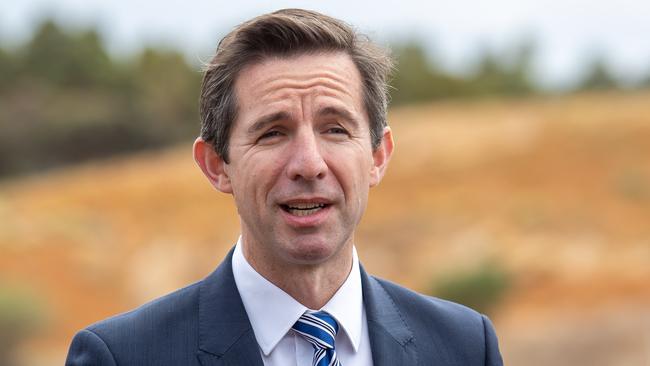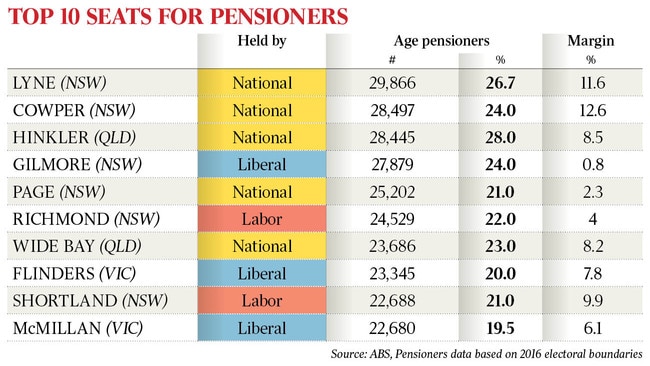Parties playing with fire if they risk wrath of retirees
A grey army of age pensioners in some of the nation’s most marginal seats will prove vital this election.

A grey army of age pensioners in some of the nation’s most marginal seats will prove vital this election, with Labor fighting attacks against its “retirees tax” and older voters considering independents in protest against major parties.
Despite guaranteeing carve-outs for pensioners from his party’s plan to end franking credit refunds, Bill Shorten is facing an attack from the Coalition about retirement incomes after the federal government tinkered with the asset test for the Age Pension and only recently dropped its own plan to hike the eligibility age to 70.
The battle will play out particularly in coastal retirement electorates — largely held by Nationals members — with the highest numbers of pensioners.
Federal government campaign spokesman Simon Birmingham told The Australian older people faced a “stark choice”.
“It’s a choice between the Liberal-National government and lower taxes or Bill Shorten’s Labor Party and higher taxes on everything from their savings to their homes, their cars and even their electricity bills,” Senator Birmingham said.

The Opposition Leader has centred his pitch on more services, especially in health. On Sunday the ALP announced a $2.4 billion commitment to give free dental care to pensioners. “I’ve already been inundated by pensioners since our announcement who say every election there’s nothing for the pensioners. Well, that stops today,” Mr Shorten said.
Labor is fighting to hold the northern NSW border electorate of Richmond, which it won with a 4 per cent margin in 2016. In neighbouring Page, held by the Nationals’ Kevin Hogan on 2.3 per cent, there are 25,202 pensioners.
In the NSW state election, the ALP’s Janelle Safin — the former member for Page — won the overlapping state seat of Lismore on Greens preferences.
The Coalition faces its own battle in the NSW south coast seat of Gilmore, which ranks fourth for the number of pensioners, with 27,879 voters, which it holds on a margin of 0.8 per cent. A messy preselection, in which Warren Mundine was hand-picked by Scott Morrison to replace an already chosen candidate, has not helped the campaign.
The former Liberal candidate, Grant Schultz, is now running as an independent and the Nationals are also fielding a candidate.
Since the last quarter of 2017, there has been a 16-point turnaround in the Coalition’s fortunes with voters aged 50 and older — satisfaction in the leadership of Malcolm Turnbull and then Mr Morrison jumped from 26 per cent to 42 per cent, while dissatisfaction fell almost 20 points.
Over the same period, however, older voters barely changed their view of Mr Shorten and were consistently the highest-ranking age group in his dissatisfaction ratings. Only 31 per cent of those aged 50 and older were happy with his performance.
The gap between the parties is narrower on voting intentions, with the Coalition just in front.
This cohort, however, is also the largest group more likely to vote for One Nation, according to consecutive Newspolls since the 2016 election, which will put pressure on the Coalition in the Queensland seats of Hinkler and Wide Bay. One Nation has been stalking this territory, a move that has spooked local MPs.
While Mr Morrison has sharpened his attack against Mr Shorten on retirement matters, the Labor leader is running a campaign largely focused on intergenerational fairness, with the natural consequence of pitting young people against older Australians.



To join the conversation, please log in. Don't have an account? Register
Join the conversation, you are commenting as Logout